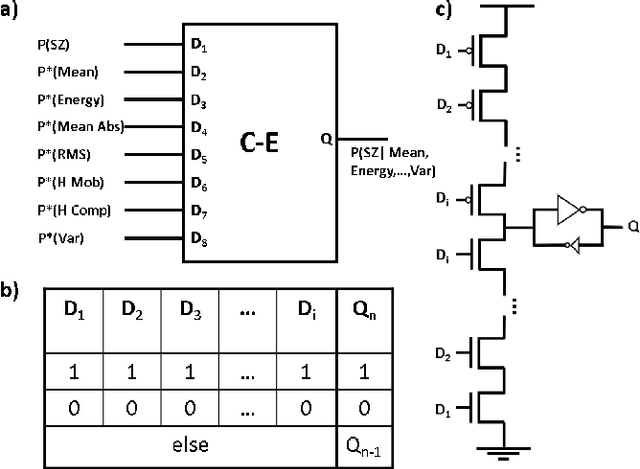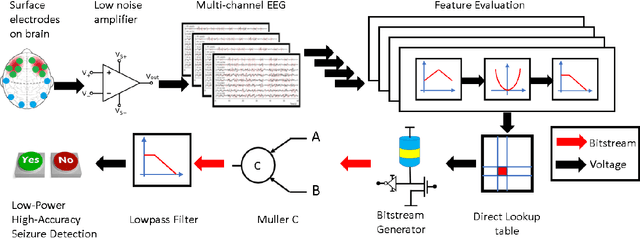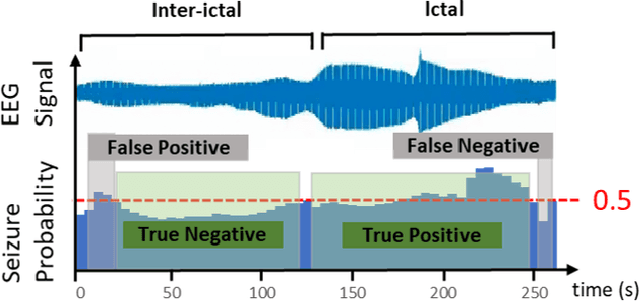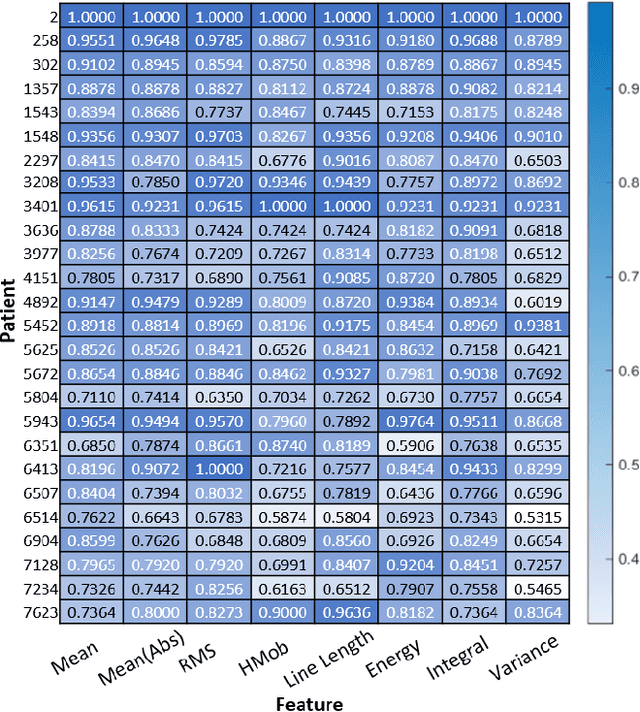Jay Harvey
Real-Time Diagnostic Integrity Meets Efficiency: A Novel Platform-Agnostic Architecture for Physiological Signal Compression
Jan 04, 2024Abstract:Head-based signals such as EEG, EMG, EOG, and ECG collected by wearable systems will play a pivotal role in clinical diagnosis, monitoring, and treatment of important brain disorder diseases. However, the real-time transmission of the significant corpus physiological signals over extended periods consumes substantial power and time, limiting the viability of battery-dependent physiological monitoring wearables. This paper presents a novel deep-learning framework employing a variational autoencoder (VAE) for physiological signal compression to reduce wearables' computational complexity and energy consumption. Our approach achieves an impressive compression ratio of 1:293 specifically for spectrogram data, surpassing state-of-the-art compression techniques such as JPEG2000, H.264, Direct Cosine Transform (DCT), and Huffman Encoding, which do not excel in handling physiological signals. We validate the efficacy of the compressed algorithms using collected physiological signals from real patients in the Hospital and deploy the solution on commonly used embedded AI chips (i.e., ARM Cortex V8 and Jetson Nano). The proposed framework achieves a 91% seizure detection accuracy using XGBoost, confirming the approach's reliability, practicality, and scalability.
An Unobtrusive and Lightweight Ear-worn System for Continuous Epileptic Seizure Detection
Jan 01, 2024Abstract:Epilepsy is one of the most common neurological diseases globally, affecting around 50 million people worldwide. Fortunately, up to 70 percent of people with epilepsy could live seizure-free if properly diagnosed and treated, and a reliable technique to monitor the onset of seizures could improve the quality of life of patients who are constantly facing the fear of random seizure attacks. The scalp-based EEG test, despite being the gold standard for diagnosing epilepsy, is costly, necessitates hospitalization, demands skilled professionals for operation, and is discomforting for users. In this paper, we propose EarSD, a novel lightweight, unobtrusive, and socially acceptable ear-worn system to detect epileptic seizure onsets by measuring the physiological signals from behind the user's ears. EarSD includes an integrated custom-built sensing, computing, and communication PCB to collect and amplify the signals of interest, remove the noises caused by motion artifacts and environmental impacts, and stream the data wirelessly to the computer or mobile phone nearby, where data are uploaded to the host computer for further processing. We conducted both in-lab and in-hospital experiments with epileptic seizure patients who were hospitalized for seizure studies. The preliminary results confirm that EarSD can detect seizures with up to 95.3 percent accuracy by just using classical machine learning algorithms.
Analog Seizure Detection for Implanted Responsive Neurostimulation
Jun 11, 2021



Abstract:Epilepsy can be treated with medication, however, $30\%$ of epileptic patients are still drug resistive. Devices like responsive neurostimluation systems are implanted in select patients who may not be amenable to surgical resection. However, state-of-the-art devices suffer from low accuracy and high sensitivity. We propose a novel patient-specific seizure detection system based on na\"ive Bayesian inference using M\"uller C-elements. The system improves upon the current leading neurostimulation device, NeuroPace's RNS by implementing analog signal processing for feature extraction, minimizing the power consumption compared to the digital counterpart. Preliminary simulations were performed in MATLAB, demonstrating that through integrating multiple channels and features, up to $98\%$ detection accuracy for individual patients can be achieved. Similarly, power calculations were performed, demonstrating that the system uses $6.5 \mu W$ per channel, which when compared to the state-of-the-art NeuroPace system would increase battery life by up to $50 \%$.
 Add to Chrome
Add to Chrome Add to Firefox
Add to Firefox Add to Edge
Add to Edge